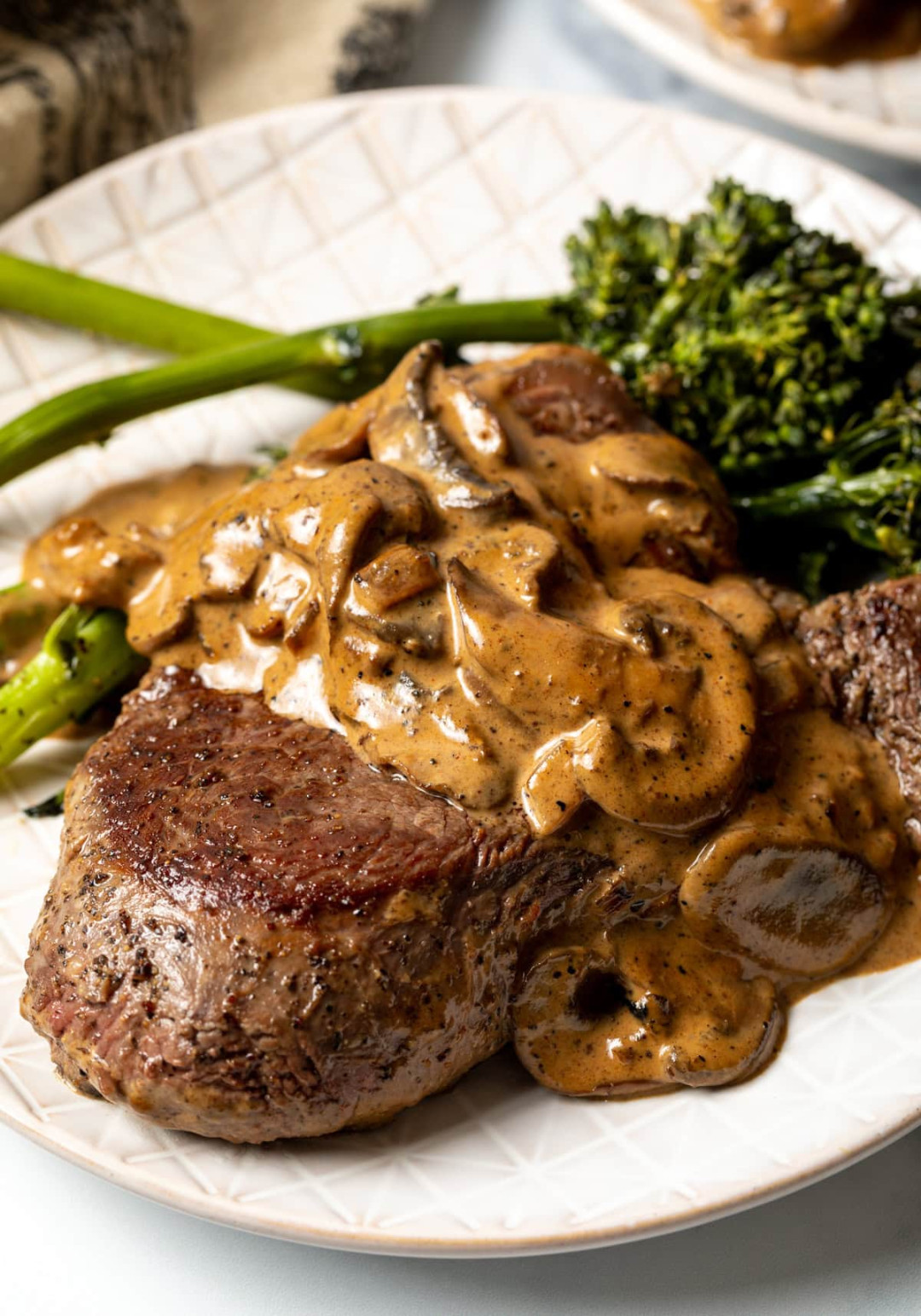Cheesecake Factory’s steak Diane, a beloved classic, provides a fantastic foundation for culinary exploration. This recipe takes inspiration from its rich history and infuses it with global flavors, resulting in a truly unique dining experience.
Ingredients:
1 (10-ounce) beef tenderloin, trimmed and cut into 1-inch thick slices

Image Source: aspicyperspective.com
Preparation:
1. Prep the Steak: Season the beef tenderloin slices generously with salt and pepper.
2. Sear the Steak: Heat the butter and olive oil in a large skillet over high heat. Sear the steak slices for 1-2 minutes per side, or until browned. Remove the steak from the pan and set aside.
3. Create the Sauce: In the same skillet, add the Cognac or brandy and ignite it to burn off the alcohol (flambé). Be cautious and perform this step under a well-ventilated hood.
4. Simmer the Sauce: Add the white wine, beef broth, Dijon mustard, parsley, tarragon, garlic, and thyme to the skillet. Bring to a boil, then reduce heat and simmer until the sauce thickens, about 5-10 minutes.
5. Finish the Dish: Return the seared steak slices to the sauce and cook for an additional 2-3 minutes, or until desired level of doneness. Stir in the heavy cream and cook for another minute, or until the sauce is smooth and creamy.
6. Serve: Plate the steak slices and drizzle generously with the sauce. Serve immediately with your choice of sides, such as roasted potatoes, creamy mashed potatoes, or a side salad.
Total Time: Approximately 30 minutes
Serving Ideas:
Elegant Presentation: Serve the Steak Diane on a bed of creamy mashed potatoes, garnished with fresh herbs and a drizzle of truffle oil.
Cultural Influences:
This recipe draws inspiration from various culinary traditions. The classic Steak Diane has its roots in French cuisine, while the bold flavors and techniques used in this recipe pay homage to global influences. The flambéing technique, for instance, is a classic French culinary practice that adds a dramatic flair to the dish. The addition of herbs like tarragon and thyme, as well as the use of rich, creamy sauces, further highlight the French connection. However, the versatility of the dish allows for endless possibilities. By incorporating different spices, sauces, and side dishes, one can create a truly personalized and culturally diverse dining experience.
Conclusion:
This Steak Diane recipe is a testament to the power of culinary fusion. By blending classic French techniques with global flavors, we’ve created a dish that is both familiar and exciting. It’s a reminder that the culinary world is vast and ever-evolving, and that by embracing different cultures and traditions, we can create truly extraordinary dining experiences.